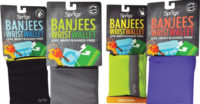Strategically Rebuilding Center Store Brands' Reputation








Talk to any of the major shelf-stable food and beverage companies, and they will tell you that center store is “dying.” Why is this happening?
Is the advice of talk show nutritionists and doctors to stick to the periphery and only eat fresh food finally starting to sink in?
Are we being tempted by more exciting products, exotic flavors and clever packaging innovations in the outer aisles — or even shopping in other retail channels altogether?
What about all the devoted food bloggers? Have they succeeded in shaming us into eating and serving our families only organic, fresh, local or non-GMO foods?
The answer is … all the above, really. We are becoming more educated about ingredients. We are bored with the chore of shopping. We are feeling the influence of foodies and becoming choosier about what we eat. We are experiencing other culinary cultures. We now share the store with younger consumers who see just about everything differently than their parents did. The end result is that retailers and brands are fighting back with products perceived as “new age” to lure us back to center store.
GET FRESH WITH FORMULATIONS
Knowing that shelf stable (and frozen, for that matter) is still a very necessary benefit, exactly what is this segment doing to bounce back? The only choice for the center store brands is to up their game in product formulation and let consumers know that something is dramatically different. If changes on the inside aren’t reflected on the outside, shoppers might simply keep walking. To help announce that change, brands are using design to bridge the gap between traditional shelf-stable packaging and aspirational fresh food visual cues.
Undoubtedly, there will be varying opinions in our community as to how much “better” these products really are for us. I think it’s best to table that conversation for this piece and focus on the design influences alone.
SMALL CHANGES
Before we dive into some of the more exciting design techniques, know that some brands are working to capitalize on the latest health and ingredient trends without embarking on a major design change. There are reasons why this might be the right strategy for a brand. For example:
- The category may not have an identical fresher alternative (i.e., all cereal is shelf stable).
- The ingredient alone (kale) is enough to transform stigmas about center store brands.
- The brand could already be a game-changer in another aisle, and its success there translates throughout the store (i.e., Plum).
- The flagship brand can better capitalize on the halo effect of the new product if the design remains similar.
DISTANCE THROUGH DESIGN
Moving on to the opposite end of the spectrum, here are four examples of design techniques being leveraged so that products avoid looking like “center store” nutrition as usual.
1. Color to signal a healthier alternative
Wouldn’t you like to be the designer who suggested no red at all on Coca-Cola Life, the brand’s lower calorie, stevia-and-sugar sweetened beverage? It is interesting that Pepsi did not go as far and kept its red, white and blue sphere branding intact when it removed artificial sweeteners from its short-lived “True” offering: Veterans in the business would say that the Coca-Cola script in white is still recognizable, but that Pepsi is not as fortunate visually.
2. Tactile cues
Note the fresh pasta “faux string” used on Stop & Shop’s package design, the simulated wooden and metallic textures on the Arizona Oak iced tea, and last, but not least, the paper bag feel on Lancaster candy from Hershey’s (and no overt Hershey’s branding, either). They certainly bring the mind back to a simpler time, when food was not so often mass manufactured.
3. Product windows
All of these brands are proud to show you the actual product through a window as if to say, “Our ingredients are superior, and we have nothing to hide.” This could also be a strategy to put these offerings in the same consideration set as the new competitive threat: for example, Nature Valley’s design response to KIND bars’ iconic clear flow wrap.
4. Package format changes
You can break the mold, so to speak, by using a glass liquor-like flask instead of a round plastic bottle for barbecue sauce or taking both soup and beans out of the can and into clear containers or aseptic packages. These changes are all done to enhance the perception of freshness.
MINDFUL MESSAGING
Lastly, going far beyond changing products one aisle at a time are larger-scale retailer moves, like Target’s “Made to Matter” initiative. The program is basically an extension of the previous “Design for All” campaign, with a new message of “Better Choices for All.” The intended benefit for consumers is that you can go about your normal routine and make better choices in a less overwhelming manner than changing your whole lifestyle. Then comes the overlay message: These products are “hand-picked for you,” which helps counter the image of vast and impersonal warehouses of product with expiration dates of 2020 and no genuine thought as to whether anyone actually benefits from them.
I hope this handful of examples will inspire change both in and on pack for your next initiative. How far you go really depends on the associations with your brand now and the disruption you want to create in the aisle.
Looking for a reprint of this article?
From high-res PDFs to custom plaques, order your copy today!








